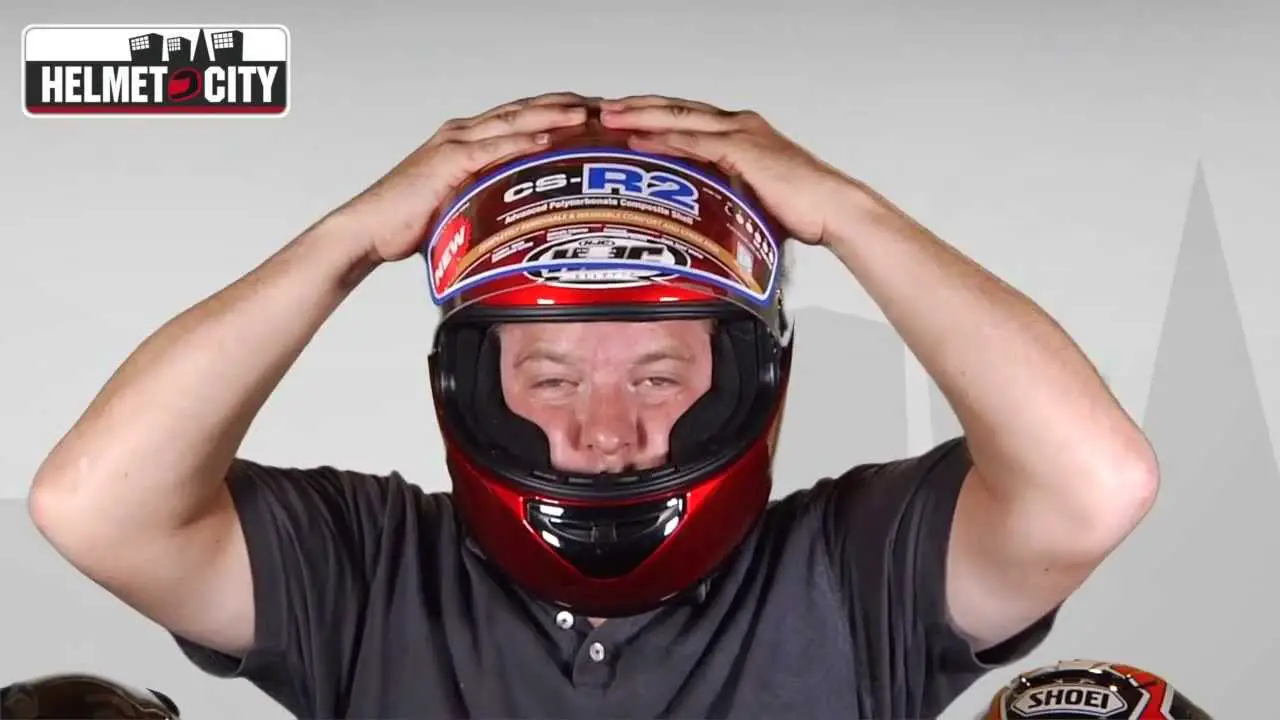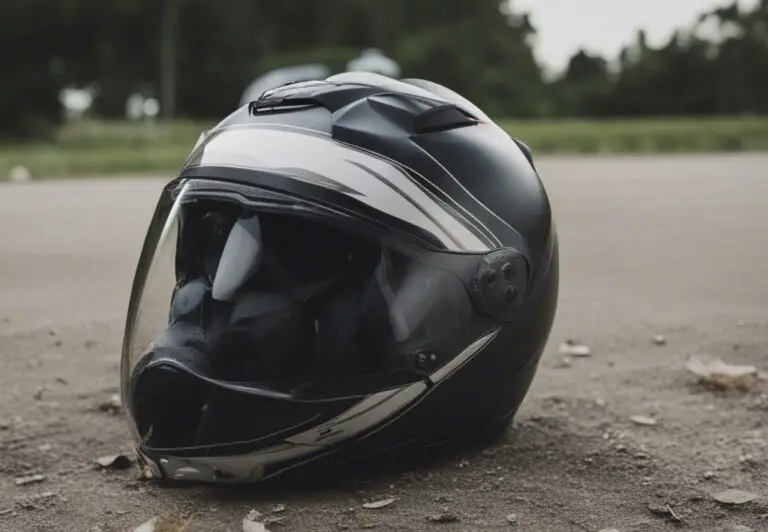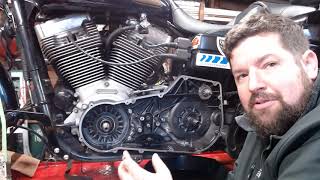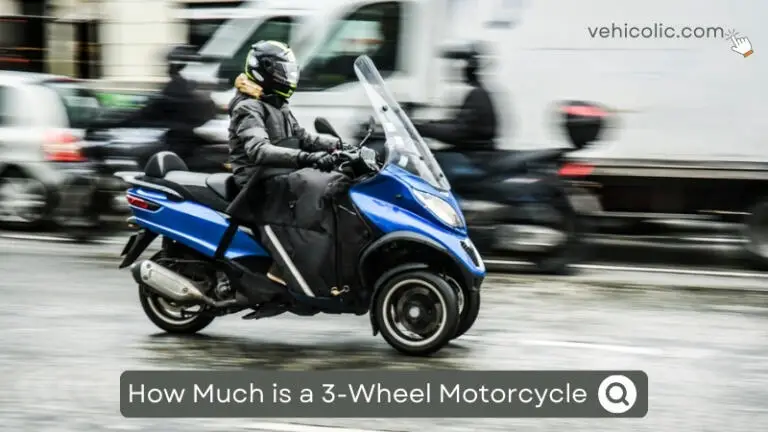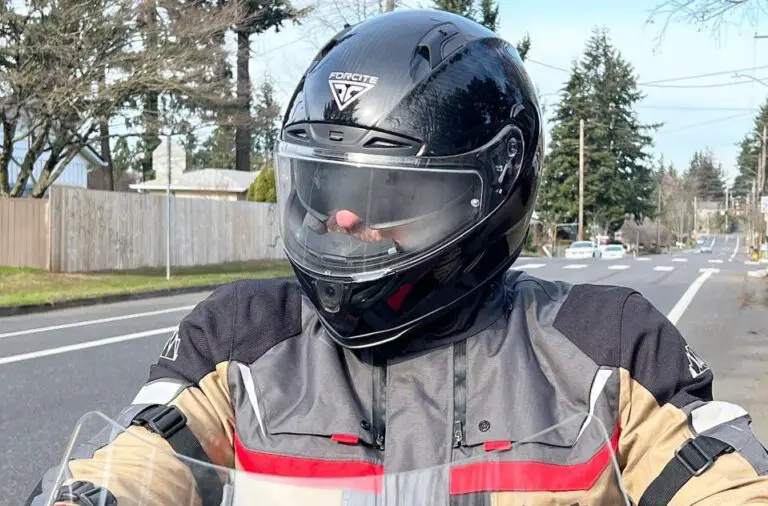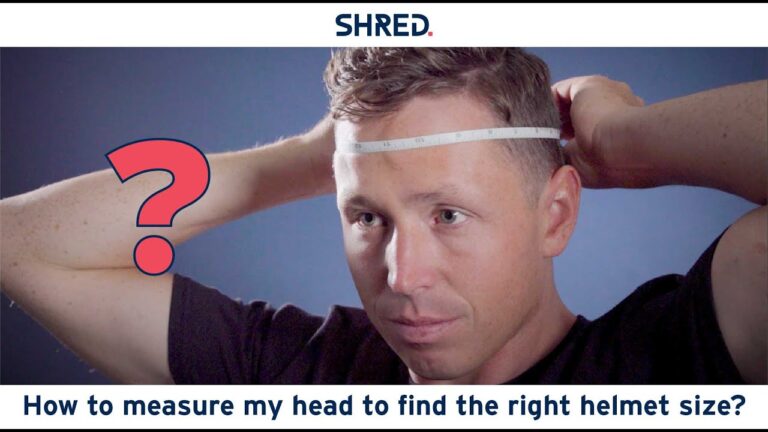How Tight Should a Motorcycle Helmet Be
A motorcycle helmet should fit snugly around your head without any pressure points or discomfort. It should feel like a big hug, with chipmunk cheeks, providing even pressure without being too tight or too loose.
A properly fitted helmet should not move when you shake your head and should rest level on your head without tilting back. If the helmet is too tight, it may cause pain or numbness, while a loose helmet may move around or not sit down completely on your head.
To ensure the right fit, the front edge of the helmet should be about one inch or less above your eyebrows. Remember, safety should always come first when choosing a motorcycle helmet.
Importance Of A Properly Fitted Helmet
Proper fitting of a motorcycle helmet is crucial for safety. The helmet should fit snugly without any pressure points, ensuring it stays in place and protects the head effectively. It should be comfortable and not move around when shaking the head.
Ensuring Safety And Protection
A properly fitted motorcycle helmet is crucial for safety and protection while riding. The helmet should fit snugly around the rider’s head without any specific pressure points. It should give the rider “chipmunk cheeks,” indicating a secure fit. A tight-fitting helmet reduces the risk of injury by providing optimal coverage and stability in the event of an accident.
Reducing The Risk Of Injury
When a helmet is too loose, it can move around or not sit down completely on the head, compromising its effectiveness in protecting the rider. On the other hand, a helmet that is too tight can cause discomfort and numbness. A correctly sized helmet should provide even pressure around the head without uncomfortable pressure points while remaining securely in place even when the head is shaken.
Maintaining Comfort During Rides
Even though a helmet should fit snugly, it should still be comfortable for the rider. A well-fitting helmet should not leave any marks on the cheeks or cause pain. Finding the right balance between a tight fit and comfort is essential to ensure an enjoyable and safe riding experience.
Sources:
| Source | Link |
|---|---|
| Bikebiz | Link |
| YouTube | Link |
| Link | |
| Quora | Link |
| NHTSA | Link |
Signs Of An Ill-fitting Helmet
When it comes to how tight a motorcycle helmet should be, it should fit snugly around your head without causing any discomfort or pain. An ill-fitting helmet may have pressure points or hot spots, which can lead to discomfort and potentially affect your focus and concentration while riding. It’s important to ensure that the helmet doesn’t slip or move around, as this can compromise its effectiveness in protecting your head in the event of an accident. Remember that a well-fitting helmet should provide even pressure around your head without any uncomfortable pressure points.
How To Determine The Right Fit
A motorcycle helmet should fit snugly on your head, like a big hug. It should not have any specific pressure points that cause discomfort, such as on your forehead or the top back corners of your head. The helmet should also provide adequate cheek padding, giving you “chipmunk cheeks”.
When determining the right fit for a motorcycle helmet, it is important to remember that tightness is okay as long as it doesn’t result in pain. The helmet should feel snug all around, without any pressure points or hot spots. If you feel like you need to remove the helmet to relieve any pain or discomfort, that’s a sign that it’s not the right helmet for you.
Overall, a motorcycle helmet should be snug but not too tight. It should fit securely on your head without any discomfort or pressure points, providing you with maximum safety and protection while riding.

Credit: www.lowmanlawfirm.com
Proper Helmet Sizing And Measurements
A properly fitting motorcycle helmet should be snug without any pressure points, providing even pressure around the head. It should not move or tilt when shaking the head. The helmet should fit as snug as possible while still being comfortable, ensuring safety while riding.
| Proper Helmet Sizing and Measurements |
| When it comes to finding the right motorcycle helmet, one of the most important factors is proper sizing and measurements. Measuring the head circumference is the first step in finding the correct helmet size. Use a measuring tape to measure around the widest part of your head, typically just above the eyebrows. |
| Selecting the correct helmet size based on measurements |
| Once you have measured your head circumference, refer to the manufacturer’s size chart to determine the appropriate helmet size. It’s important to note that helmet sizes can vary between brands, so be sure to consult the specific brand’s size chart for accuracy. |
| Importance of trying on helmets before purchasing |
| While measurements are a good starting point, it’s crucial to try on the helmet before making a purchase. A helmet should fit snugly around the rider’s head without any pressure points or discomfort. Make sure the helmet is not too loose or too tight, as both can compromise safety and comfort. It should provide even pressure around the head without any movement when shaking the head. Remember, a properly fitting helmet is essential for maximum protection on the road. |
How Tight Should A Full-face Helmet Be
A motorcycle helmet should fit snugly around the rider’s head without any pressure points. It should feel comfortable and secure, providing even pressure without discomfort. Avoid a helmet that moves around on the head or feels too loose.
|
How Tight Should a Motorcycle Helmet Be
Heading: How Tight Should a Full-Face Helmet Be Subheading: Snug fit without compromising comfort When it comes to the fit of a motorcycle helmet, it should be snug like a big hug. It should fit your head without any specific pressure points on your forehead or the top back corners. The helmet should give you chipmunk cheeks, indicating a proper fit. It should be neither too tight nor too loose, finding the sweet spot of comfort. A well-fitting helmet will provide even pressure around your head without uncomfortable pressure points. It should not move when you shake your head, ensuring that it stays securely in place during your ride. Proper adjustment of the chin strap is also crucial to ensure a secure and comfortable fit. Remember, a tight fitting helmet is essential for safety without compromising comfort. |
Common Misconceptions About Helmet Tightness
When it comes to motorcycle helmet tightness, there are some common misconceptions that need to be debunked. One of the most important things to remember is that tightness does not equate to safety. While it is true that a helmet should fit snugly around your head, it should not be overly tight. Wearing an overly tight helmet can cause discomfort and pain, which can distract you from focusing on the road. Instead, the key is to find the right balance between snugness and comfort. The helmet should fit snugly, without any specific pressure points on your forehead or the top back corners of your head. It should also give you the feeling of chipmunk cheeks. Remember, a properly fitting helmet is essential for your safety while riding a motorcycle.
Tips For Adjusting Helmet Tightness
| How Tight Should a Motorcycle Helmet Be |
| Tips for Adjusting Helmet Tightness |
| Adjusting the chin strap for a secure fit |
| Ensuring the helmet sits level on the head |
| Making use of additional padding if necessary |
When it comes to helmet fit, it should be snug like a big hug. The helmet should sit level on your head without any specific pressure points. It should also give you chipmunk cheeks, indicating a proper fit. The chin strap plays a crucial role in securing the helmet, so make sure to adjust it properly. Additionally, you can make use of additional padding if necessary to achieve a snug fit. Remember that discomfort or pain are signs that the helmet is not the right fit for you. Choose a helmet that provides even pressure around your head without uncomfortable pressure points. It should not move when you shake your head.
Personal Fit Preference And Comfort
Understanding that fit preferences may vary among individuals, finding the right balance between safety and comfort is crucial when it comes to choosing a motorcycle helmet. The helmet should fit snugly around the rider’s head without any specific pressure points, such as on the forehead or top back corners. It should give you chipmunk cheeks, indicating a proper fit. Testing different helmets is recommended to find the best fit for each rider. It is important to ensure that the helmet does not cause pain or discomfort. A snug fit all around without any pressure points or hot spots indicates the right shape and fit. A well-fitting helmet should not be too tight or too loose, providing even pressure without uncomfortable pressure points. It should not move around or sit loosely on the head. Ultimately, the helmet should feel like it is fitting securely around the head without sacrificing comfort.
Frequently Asked Questions Of How Tight Should A Motorcycle Helmet Be
Is It Better For A Motorcycle Helmet To Be Tight Or Loose?
A motorcycle helmet should fit snugly without any pressure points on your head. It should be comfortable and secure, not too tight or too loose. A properly fitted helmet should not move around on your head. Ensure even pressure and no discomfort for the best fit.
How Snug Should A Motorcycle Helmet Fit?
A motorcycle helmet should fit snugly without any pressure points or discomfort. It should feel like a big hug and give you chipmunk cheeks. The helmet should not move when you shake your head.
How Do I Know If My Bike Helmet Is Too Small?
A well-fitting bike helmet should be snug, but not too tight. It should not have any pressure points or tilt back on your head. The front edge should be about one inch or less above your eyebrows. Make sure it’s comfortable and doesn’t move when you shake your head.
How Tight Should A Motorcycle Helmet Be?
A motorcycle helmet should fit snugly around your head without any specific pressure points. It should give you a feeling of chipmunk cheeks, showing that it is a secure fit.
Conclusion
A properly fitting motorcycle helmet is essential for your safety on the road. It should fit snugly without any pressure points or discomfort. The helmet should feel like a big hug around your head, with no movement when you shake your head.
Remember, a helmet that is too loose or too tight is not ideal. Finding the right fit is crucial to ensure maximum protection while riding. Always prioritize safety and choose the helmet that offers the perfect balance of comfort and security.
Ride safe!

